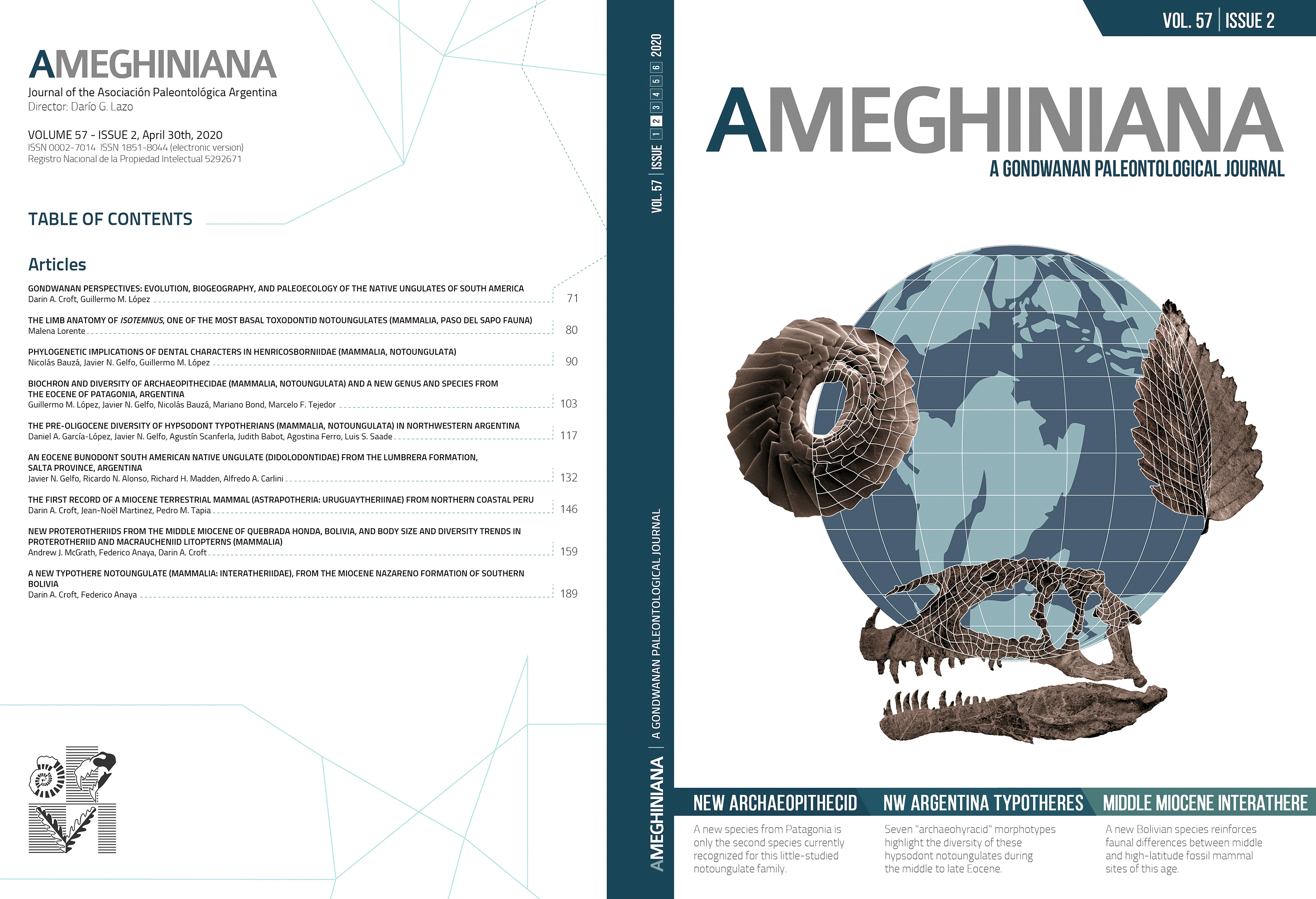AN EOCENE BUNODONT SOUTH AMERICAN NATIVE UNGULATE (DIDOLODONTIDAE) FROM THE LUMBRERA FORMATION, SALTA PROVINCE, ARGENTINA
DOI:
https://doi.org/10.5710/AMGH.29.11.2019.3293Keywords:
"Condylarthra", Litopterna, Paleogene, Meridiungulata, South AmericaAbstract
The extinct South American native ungulates are widely known as a particular evolutionary experiment of mammalian herbivory. Among their representatives, forms with bunodont dentition have received little attention, being usually regarded as primitive and placed in the paraphyletic order “Condylarthra”. Here we describe a new Didolodontidae Saltaodus sirolli gen. et sp. nov. from the Eocene of Lumbrera Formation (Santa Bárbara Subgroup) near San Antonio de los Cobres, Salta Province, Argentina. Saltaodus is represented by a small left dentary with a canine alveolus and a brachydont dentition, with p1-2, the roots of p3 and p4-m2. The jaw is broken mesial to the canine alveolus, which is circular and mesially projected. There is only one root for p1 and p2. The specimen has some similarity with North American archaic ungulates but more resembles South American bunodont ungulates. In contrast to Kollpaniinae, Saltaodus presents more separate, slender and higher cusps with well-developed cristids; the talonid basin is wide and not filled by the base of the hypoconid or the distal wall of the metaconid. Several derived character states as compared to Kollpaniinae, such as the more molarized p4, with a clear difference between trigonid and talonid, molars with a talonid equal to or wider than the trigonid, and well separated hypoconid, hypoconulid and entoconid, allow the placement of Saltaodus among Didolodontidae. Saltaodus represents one of the few known small didolodontids (< 5 kg) from the lower latitudes of South America.Downloads
Published
Issue
Section
License
Authors publishing in Ameghiniana have the option of making their article freely available online. Authors opting for the Open Access must pay a fee of $300 (US dollars) to cover article-processing costs and to ensure the article is made open access. Please contact the Production Team after the acceptance of your manuscript if you are interested in making your article Open Access. This option implies by default a license Creative Commons Attribution Non-Commercial-NoDerivs License (CC BY NC ND). If your funding institution requires a different licensing option please communicate this to the Production Team after the acceptance of your manusctipt.











